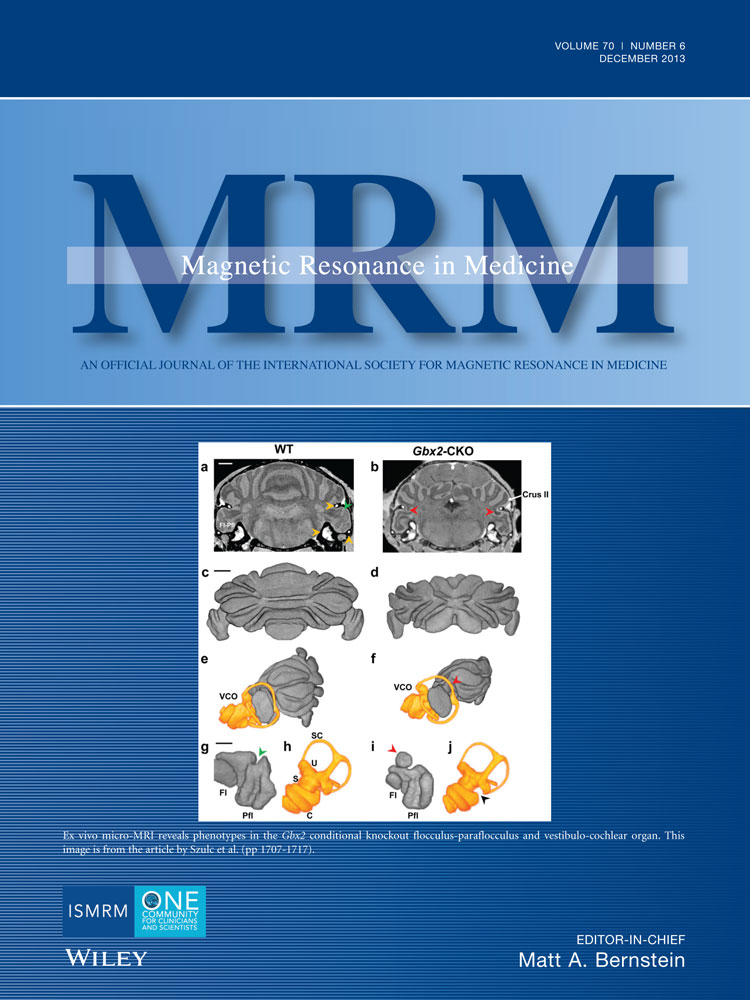Improved MRI R2* relaxometry of iron-loaded liver with noise correction
Abstract
Accurate and reproducible MRI R2* relaxometry for tissue iron quantification is important in managing transfusion-dependent patients. MRI data are often acquired using array coils and reconstructed by the root-sum-square algorithm, and as such, measured signals follow the noncentral chi distribution. In this study, two noise-corrected models were proposed for the liver R2* quantification: fitting the signal to the first moment and fitting the squared signal to the second moment in the presence of the noncentral chi noise. These two models were compared with the widely implemented offset and truncation models on both simulation and in vivo data. The results demonstrated that the “slow decay component” of the liver R2* was mainly caused by the noise. The offset model considerably overestimated R2* values by incorrectly adding a constant to account for the slow decay component. The truncation model generally produced accurate R2* measurements by only fitting the initial data well above the noise level to remove the major source of errors, but underestimated very high R2* values due to the sequence limit of obtaining very short echo time images. Both the first and second-moment noise-corrected models constantly produced accurate and precise R2* measurements by correctly addressing the noise problem. Magn Reson Med 70:1765–1774, 2013. © 2013 Wiley Periodicals, Inc.




